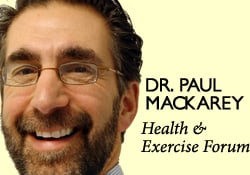 New Protective Equipment Available!
New Protective Equipment Available!Fall is not only the time of year for football, but it is soccer season as well. Moreover, concussions are not only associated with football, but with soccer as well. However, new protective equipment may offer a solution.
Concussions occur when a person’s brain is violently rocked back and forth inside of the skull because of a blow to the head or neck. Severe concussion, although rare, can lead to brain swelling, blood vessel damage, and even death. According to the University of Pittsburgh Medical Center, approximately ten percent of all athletes involved in contact sports, such as football, hockey, and soccer, suffer a concussion each year. In soccer, in a career of 300 games, a soccer player sustains an estimated 2000 blows. Even in contact sports, some concussions can be prevented by teaching proper playing and tackling techniques and by wearing proper headgear. Symptoms of concussion are not always definite and knowing when it is safe for an athlete to return to play is not always clear. Severe concussions display obvious symptoms and removal from participation is obvious. However, the athlete with a mild concussion can display symptoms that are less clear. There are serious repercussions of early return following even a mild concussion due to the long term effects of multiple mild concussions. Therefore, there is no substitute for prevention.
As you may have read, the National Football League (NFL), the National Hockey League (NHL), and the National Collegiate Athletic Association (NCAA) are involved in litigation regarding concussions. Soccer has now joined the group.
In August 2014, a group of parents from California filed a class-action lawsuit against the Federation Internationale de Football Association (FIFA), soccer’s international governing body, for its improper management of concussions in the sport. The suit claims that the FIFA failed to properly prevent, monitor and treat head injuries in soccer. The plaintiffs do not seek financial reward, but rather request changes be implemented in the sport to protect players from head injuries beginning at a young age. Ultimately, the lawsuit seeks to limit the number times children under 17 years old would be allowed to “head” the ball, similar to enforcing a “pitch count” for baseball pitchers in little league baseball. “Heading” occurs when a soccer player uses their head to strike a soccer ball in the air and some healthcare professionals feel that accumulative “heading” in soccer is the equivalent to many years of “head blows” in boxing. Additionally, the mandatory use of protective equipment, similar to the required batting helmet in baseball, has been discussed. In fact, this fall, schools in Princeton, New Jersey required students playing soccer in grades 6 to 12, to wear protective headgear for both practice and competition.
As with all new equipment, protective headgear and headbands in soccer is not without its controversy. Some feel that protecting the head with equipment gives the player a feeling of invulnerability and promotes excessive use of the head in soccer. Others feel that protective gear leads to more aggressive play by participants. However, when skeptical healthcare professionals were asked about use of protective gear for their children, all stated that they would not opt out of a mandatory protective headgear program, similar to the one used in Princeton.
A recent study published in the Journal of Athletic Training, entitled, “The Efficacy of Soccer Headgear,” found that under all conditions tested in the study, protective headgear/ headbands successfully decreased the force of impact to the head from a soccer ball. However, it was also concluded that, while headgear may be of value, it should not be a substitute for proper technique or adequate strengthening.
There are two main types of protective headgear for soccer players. One is a “headband” type product which has an extra padding in the front of the forehead area. The other is more of a light and open “helmet” style with protection in the front and on top of the head.
Visit your doctor regularly and listen to your body.
NEXT MONDAY – Read Dr. Paul J. Mackarey "Health & Exercise Forum" in the Scranton Times-Tribune.
This article is not intended as a substitute for medical treatment. If you have questions related to your medical condition, please contact your family physician. For further inquires related to this topic email: drpmackarey@msn.com
Paul J. Mackarey PT, DHSc, OCS is a Doctor in Health Sciences specializing in orthopaedic and sports physical therapy. Dr. Mackarey is in private practice and is an associate professor of clinical medicine at The Commonwealth Medical College.